A Walk In the Park – March 21, 2022 by Tom Barrett
The first day of Spring in the Park. In the early morning light the newly emerged, translucent green, oak leaves brighten the understory and the Park glows. One of my favorite times of year in Lower Park, everything is green or greening. Soon as the leaves darken and fill out it will be dark and shady, perfect for the warm days of Summer.
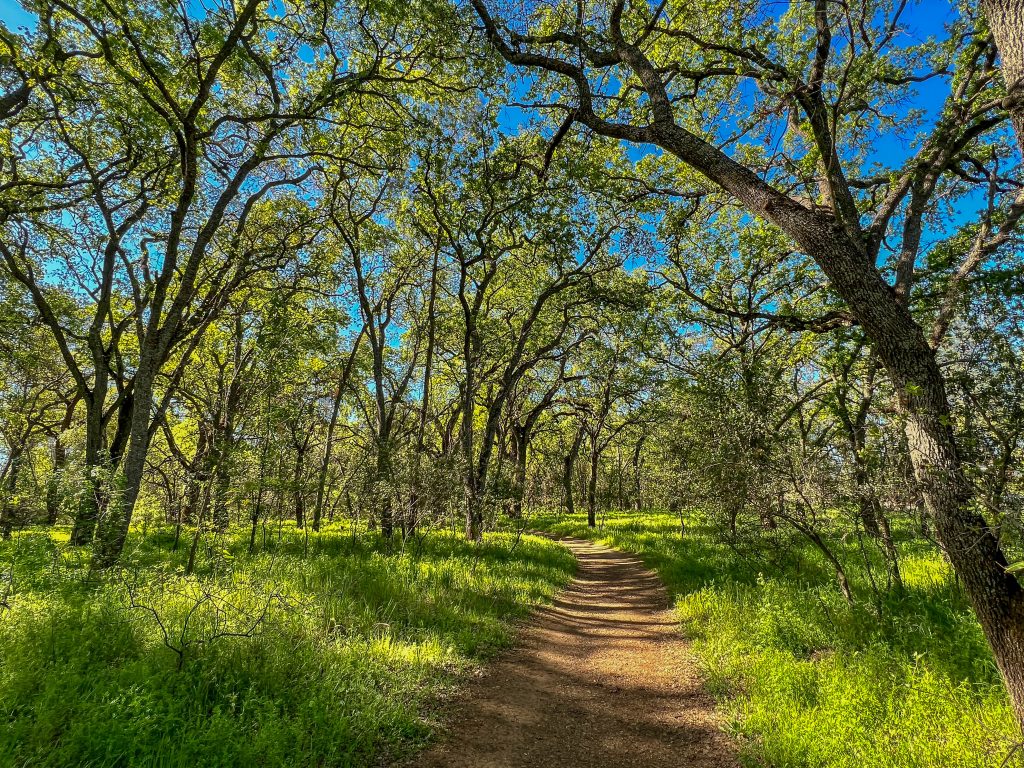
Today was an “old route” day and I headed towards the freeway and Rey Way. When I started walking daily two years ago I would go this route, which required that I walk along Hwy 99 and the monstrous sound wall for almost a quarter of a mile. Despite its name, the sound from the traffic on the other side of the wall was still loud and disturbing. I decided to go this route so that I’d see a little different part of Lower Park.
Miner’s Lettuce
At the entrance to the Park next to the freeway, I spotted a patch of Miner’s Lettuce along the bike path. it was fading fast because of the lack of rain. It is a rainy season plant and it was growing nicely from December until now. The difference in the quality of the Miner’s Lettuce in this picture is most likely because the ground under the healthy-looking Miner’s Lettuce had been disturbed and was broken up, while the soil with the drying Miner’s Lettuce was hard packed. The little moisture we did get in the past two weeks was retained better by the disturbed soil.
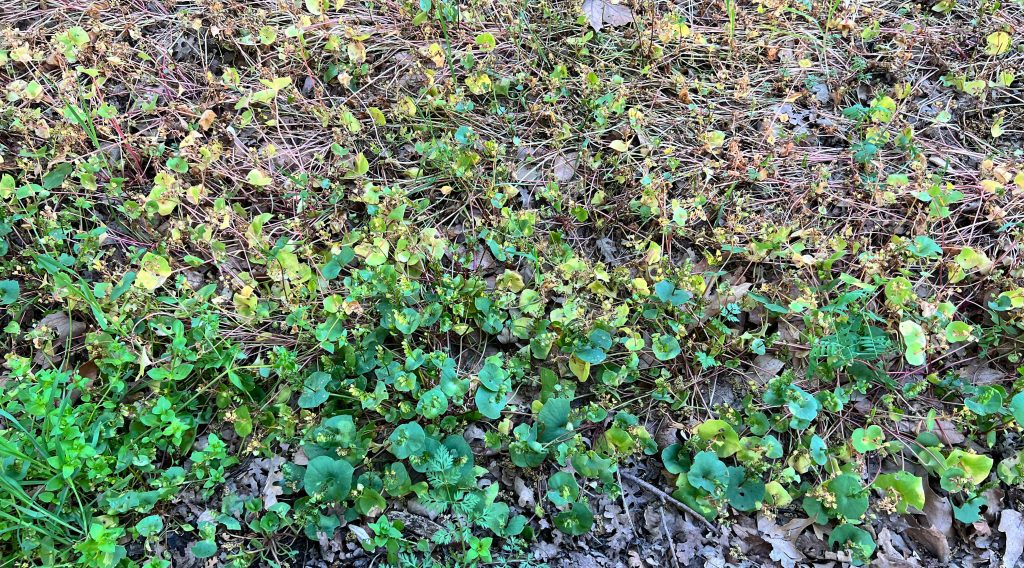
It was a salad in the making if folks knew that it was edible. The name was given to it because supposedly it was eaten by goldrush era miners as lettuce. I have a hard time seeing a group of miners sitting around making salads after a hard day of panning for gold, but hey who knows. It is a source of Vitamin C and prevented scurvy.
Miner’s Lettuce is one of the first native ground covers to grow after the rains start in late fall and by early spring it has ceases growth and dies out before the really warm dry weather hits. The photo below is the same patch only three weeks earlier.
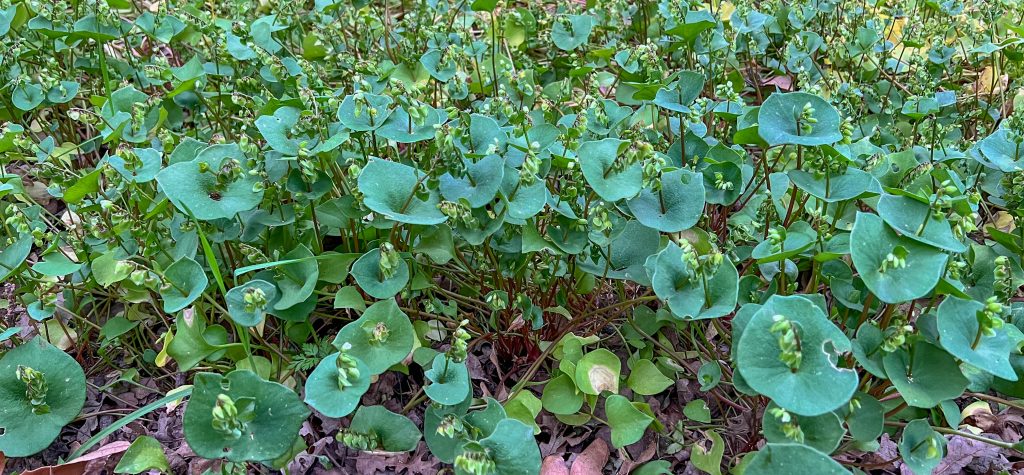
For some reason I focused on ground cover during this walk. Starting with the Miner’s Lettuce at the Park Entrance and walking though the enchanted oak forest of Lower Park. Lower Park’s ground cover has been compromised over the years by a variety of non-native, invasive plant species. The Park Department has never tried to control any of the weeds that have taken over the Lower Park, in fact, according to Park lore and legend the Park Department encouraged the planting of Periwinkle in Lower Park by the Boy Scouts to serve as erosion control ground cover, where none was needed.
California Pipevine/Dutchman’s Pipe
Despite all of the invasive weeds one of the first plants I notice is the native California Pipevine (Aristolochia californica) winding its way towards the sky on a small twig. It’s distinctive heart-shaped flower and winding stem very apparent above the spreading vetch.
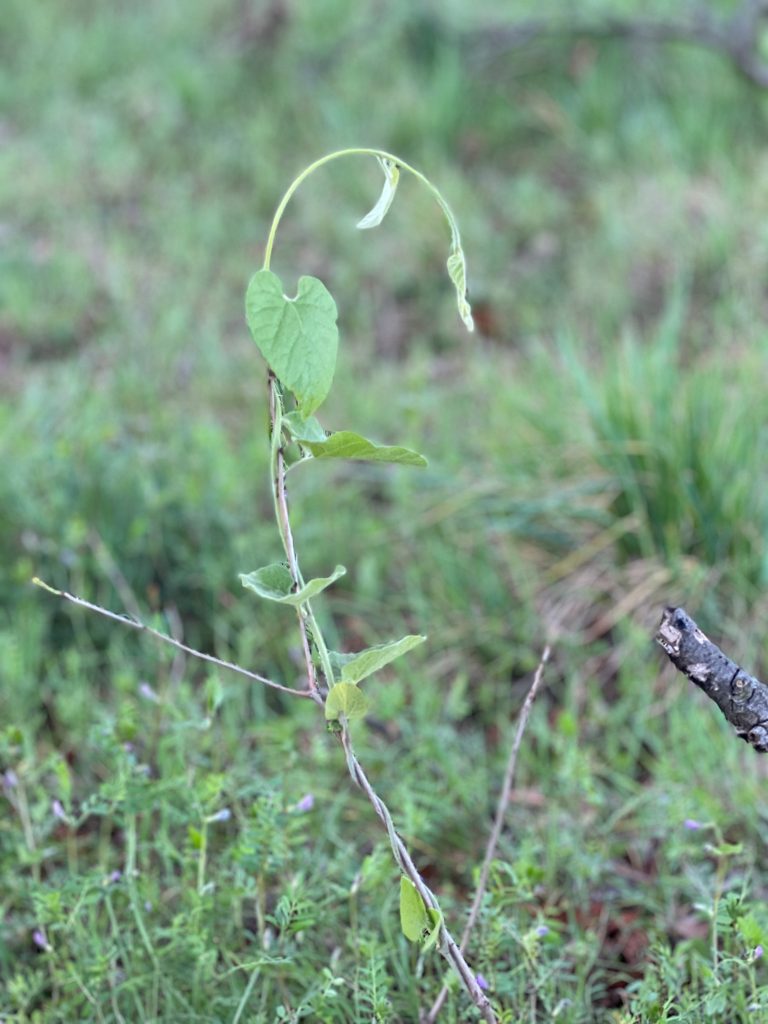
California Pipevine, or Dutchman’s Pipe, is a common native plant growing in shady, moist areas near waterways, especially in association with oak woodlands. They are throughout Bidwell Park and in Lower Park they compete with vetch and Periwinkle as ground cover. In some areas they are the dominant ground cover while in others they fight hard to get above the vetch. They will also climb up and on short plants or fences, but unlike wild grape, they don’t climb high into the trees. You can observe these vines growing on the fence that runs along Vallombrosa in the Park.
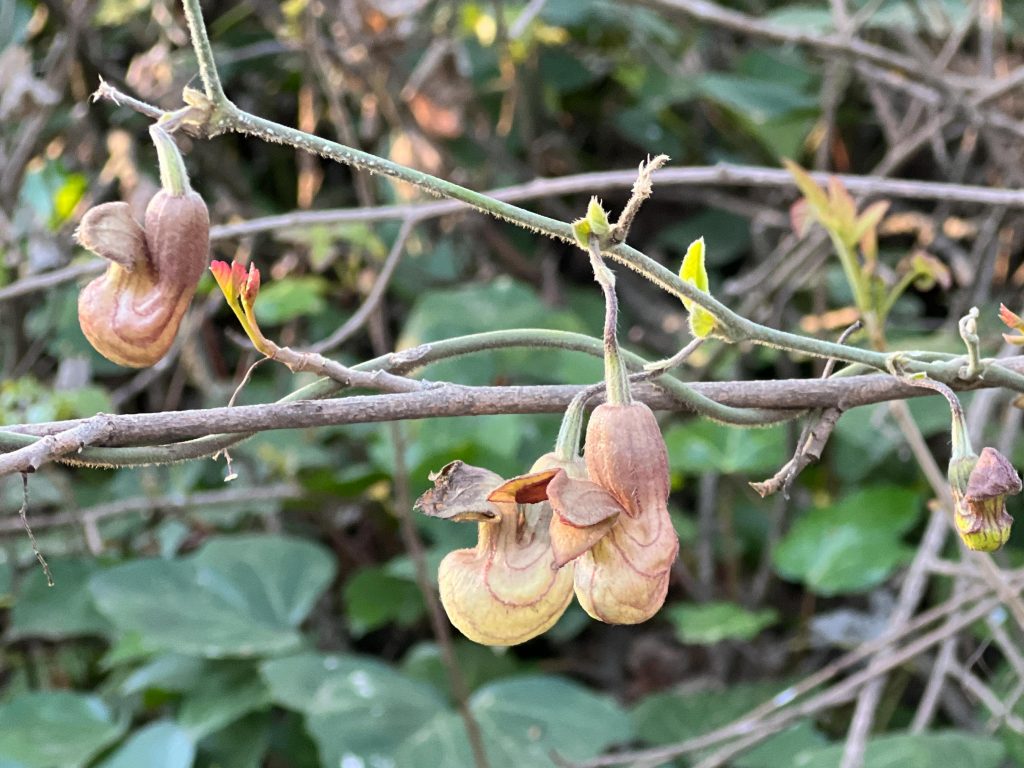
The California Pipevine, or Dutchman’s Pipe, is called that because of their unique flowers. Pipevine flowers are a photographers favorite. They look like a papery, smoking pipe which is where they get the pipe vine name or the “Dutchman’s Pipe”. The flowers show up in December and last until March and seem to be only found on Pipevine vines that have gained altitude and are off the ground (at least I’ve never noticed them on the plants that blanket the ground). The vines wind upward in other shrubs or fences and the flowers can be readily seen because the bloom before the plant leafs out. Once thought to be a carnivorous flower it has been determined that while they attract pollinators with a putrid smell it isn’t a bait for nourishment, but for pollination.
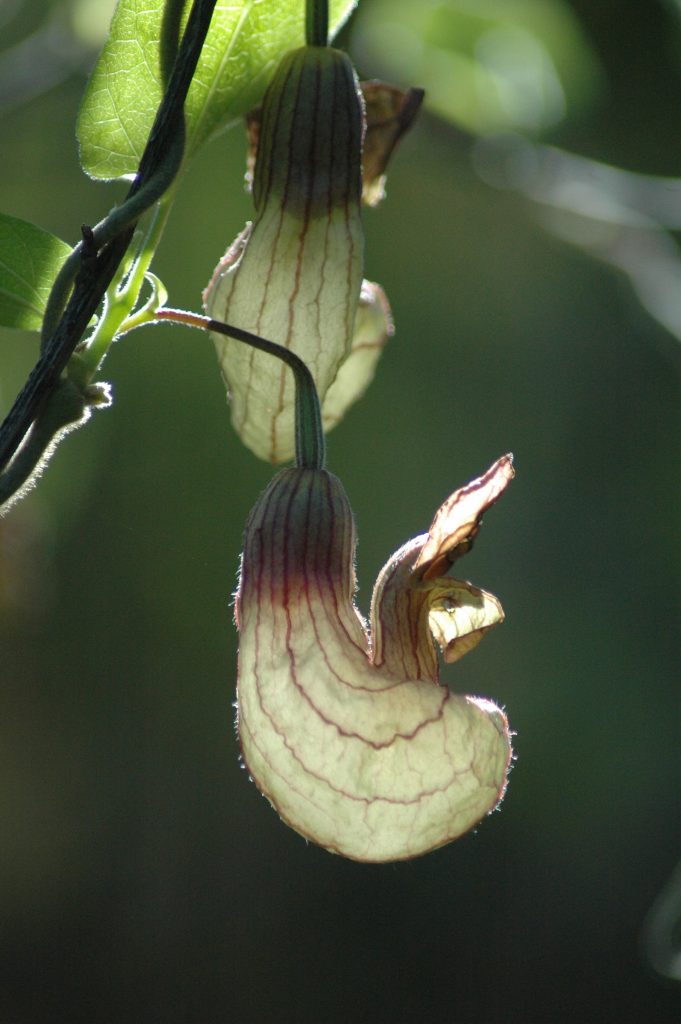
The California pipevine is the home and food source of the Pipevine Swallowtail (Battus philenor) butterfly. These black and dark blue swallowtails with distinctive orange spots are easily distinguished from the yellow swallowtails and can be seen throughout the summer in the Park.
Pipevine Swallowtails lay their eggs only on pipevine leaves. When they emerge, the larvae eat the leaves before pupating and turning into butterflies in late summer or early fall. By May the black larvae with their distinctive orange spots and bristly legs can be found everywhere crawling around on these plants and on trails. Pipevine Swallowtail larvae inject toxic plant chemicals which keep predators away. The adults are also toxic and are not preyed upon. A number of other swallowtails mimic the Pipevine Swallowtail for protection from predators.
Vetch (Vicia species)
One of the dominant Lower Park ground covers is vetch. Vetch is a member of the pea family (Fabaceae) with more than 150 species. While I’m not a vetch expert I can only identify it as Hairy or Winter vetch (Vicia villosa) and it is everywhere in Lower Park. This morning it seemed like the vetch grew a foot or more in height over the past week and it probably has. In many areas it is almost two feet high. Grasses can’t even get established when vetch takes over an area, and that is what has happened in Lower Park.
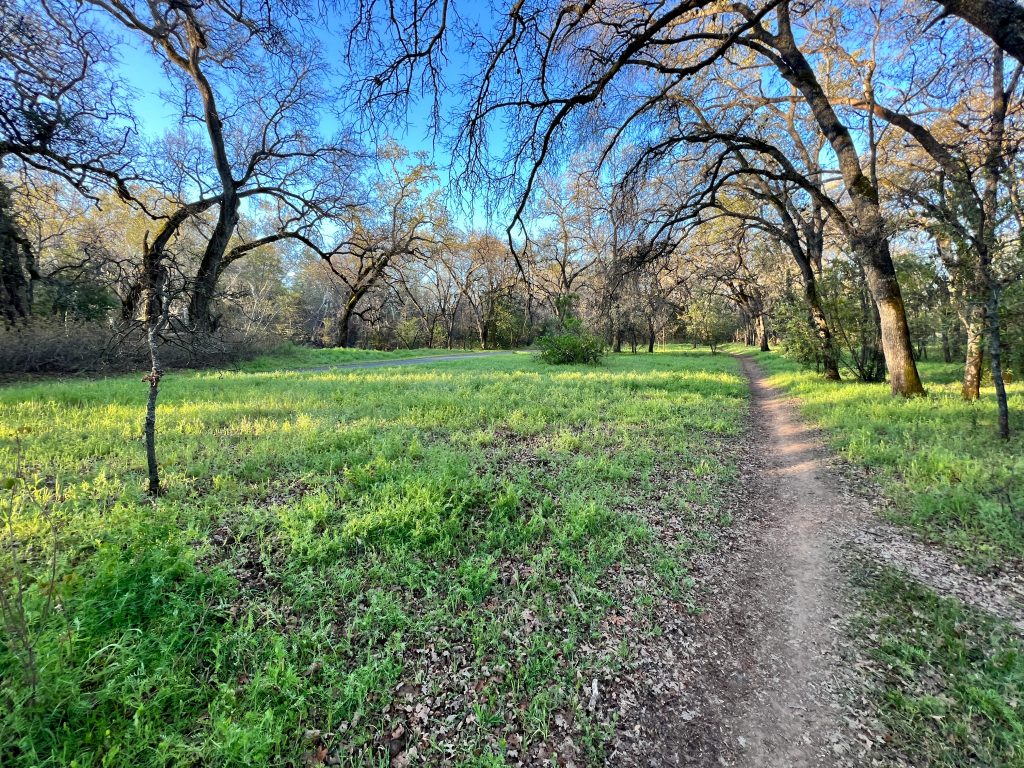
As it’s family name implies it produces a prodigious number of seeds in their peapods. The purple flowers attract a number of pollinators including the Pipevine Swallowtail.
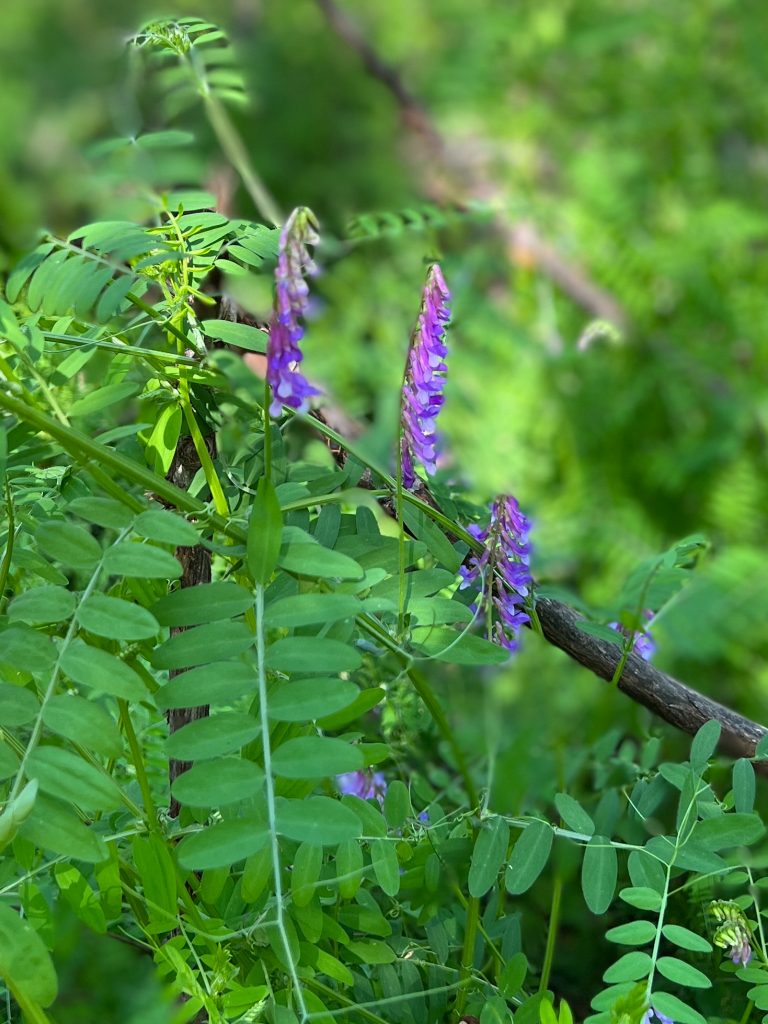
One of the many likely causes for the widespread designation of this non-native invasive weed are the goats that the Park Department has hired over the past few years to reduce fuel load in Lower Park. The City times the goat grazers perfectly to spread seeds of weeds where they graze. Goats over the past few years have been brought in during the late fall, after weed seeds have set. Eating the nutritious dried out vetch, it is used as a cattle feed and promoted as a cover crop, the goats spread the seeds prepackaged in little balls of fertilizer. Coincidently the areas with the highest density of vetch are also the areas the goats graze every year.
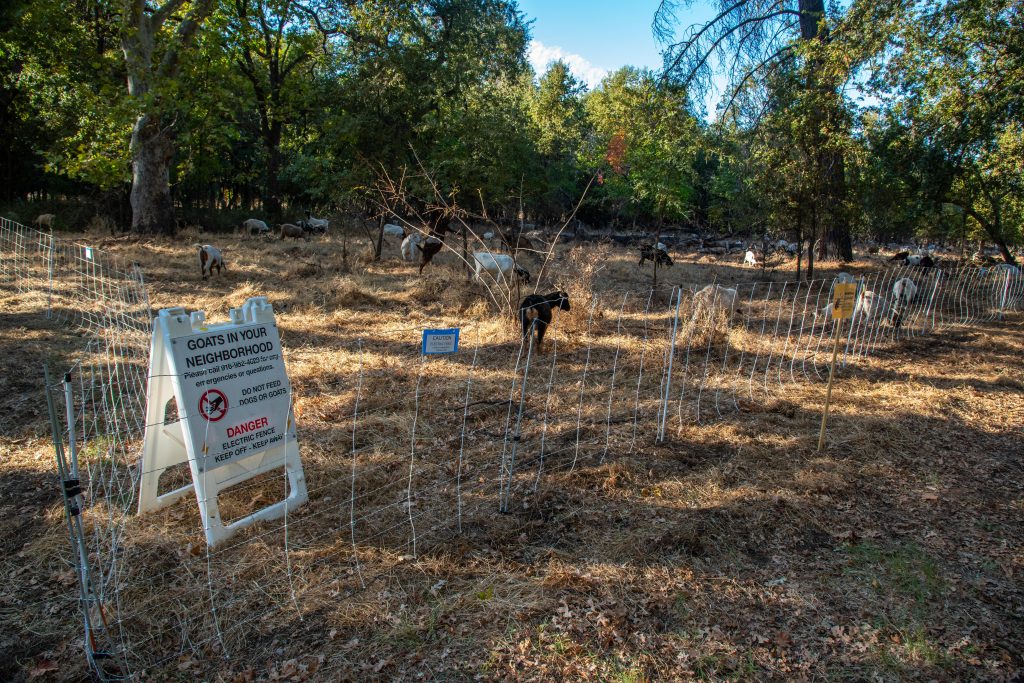
Ivy
As I walk on I notice another prolific invasive weed that is a dominate ground cover in Lower Park, Algerian ivy (Herera canariensis). Like vetch it is everywhere in Lower Park and has made its way up into the tree canopy. While the California Invasive Plant Council (Cal-IPC) list Algerian ivy as an invasive weed with “high ecological impact” the Park Department ignores it. Ivy has taken over many acres of Lower Park along with Periwinkle and vetch.

Ivy is throughout Lower Park and in many places it is up in the Oaks. The City takes no active roll in managing this invasive scourge in the Park and it will cost them dearly once they decide to do something about it. A group of concerned citizens and volunteers, known as the Ivy League, have been trying to manage the tree-climbing ivy by cutting the vines around the base of the trees. I have to thank them for doing this, but it isn’t enough.
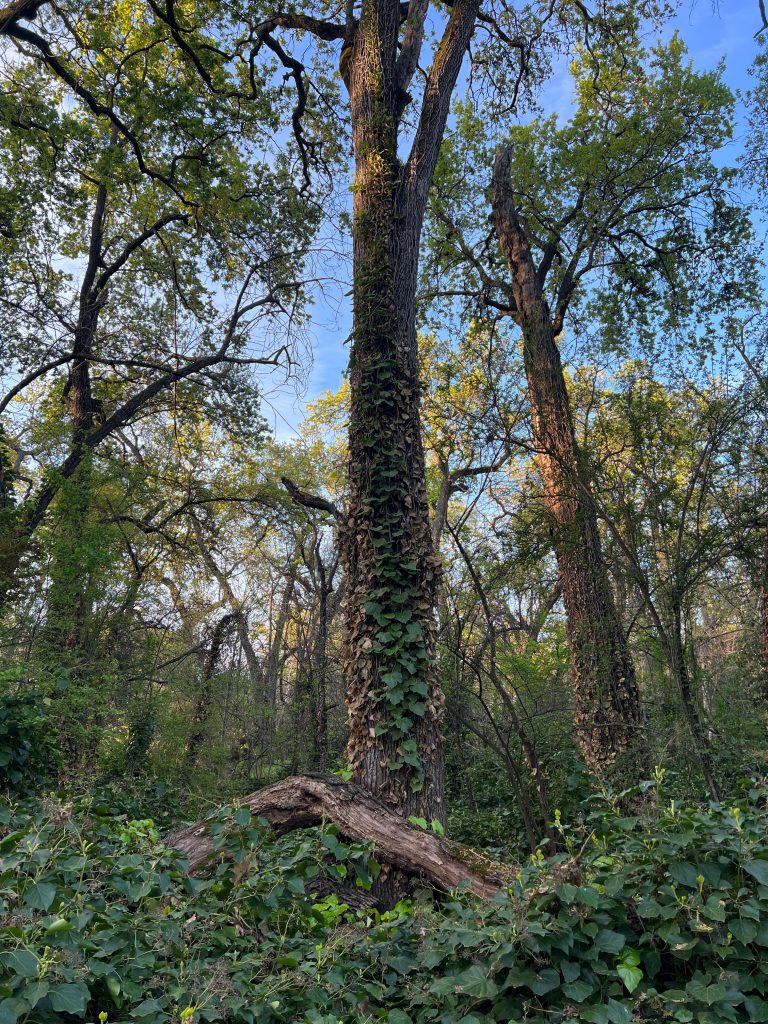
Periwinkle
The third major invasive ground cover that dominates Lower Park is the periwinkle (Vinca major). This evergreen perennial is throughout Lower Park from 5-Mile to the Esplanade and beyond. Like the Algerian ivy this plant is always green, growing, and spreading. It covers more of Lower Park than ivy and vetch and all combined it is estimated that these three invasive weeds cover 80 percent of the Lower Park.
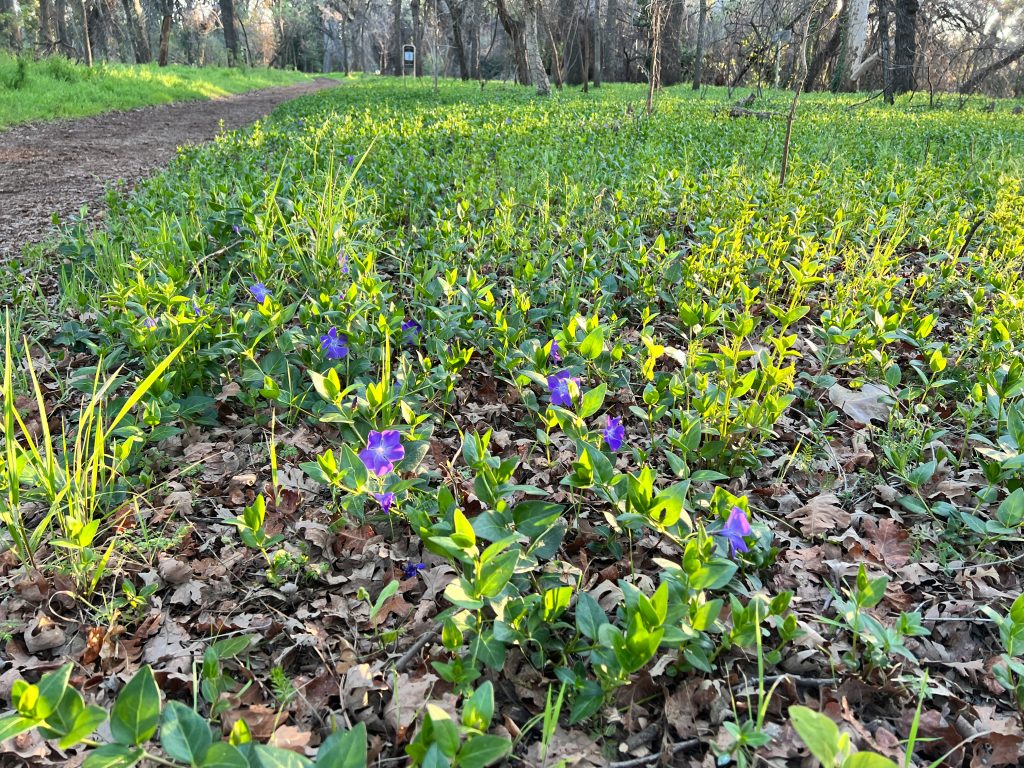
Periwinkle is the perfect ground cover, it grows rapidly and with little water, covers everything and doesn’t let anything else grow, and doesn’t have any natural enemies. As the picture below shows dense mats of periwinkle covering everything and doesn’t allow other plants to germinate. People like periwinkle because of the flowers and the fact that is remains green throughout the year providing a green landscape summer and winter.
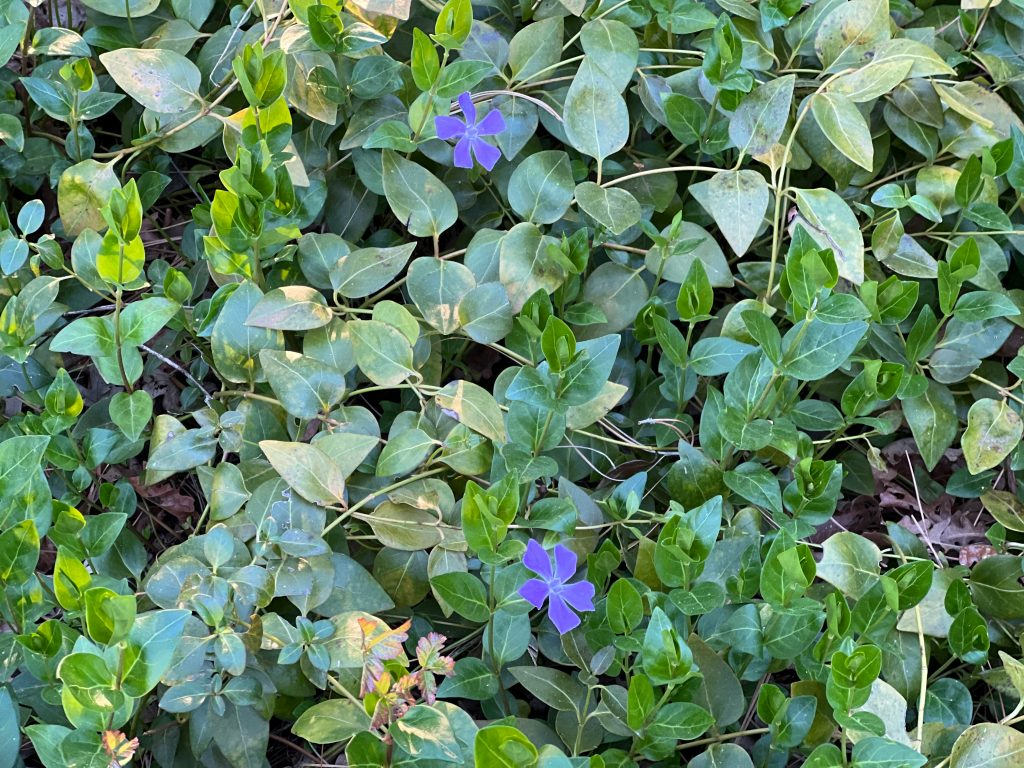
Park lore suggests that periwinkle was planted in the Park by Boy Scouts in the 30’s or 40’s for erosion control project along Big Chico Creek. Periwinkle is not spread by seeds but by the runners and even broken pieces. It has been very effective in spreading throughout Lower Park and the Park Department has never made any effort to control this invasive weed. Goats don’t seem to touch it as it is toxic to many animals and may assist in spreading it by breaking it up with their hooves. Since no one tracks these invasive it is hard to tell the extent of their spread from year to year. The one benefit of periwinkle is that it provide a green ground cover that is unlikely to catch fire or it is doesn’t would not spread rapidly.
As you walk through Lower Park notice the ground cover at different times of the year. There is hardly any grass growing under the trees because they have been out-competed by the periwinkle, ivy, and Himalayan blackberry (Rhus armeniacus). The native ground cover plants die out with the lack of rain and rejuvenate once it starts raining again. With the exception of the annual vetch, which does die back by late summer, the invasive ground covers remain green and growing throughout the year.